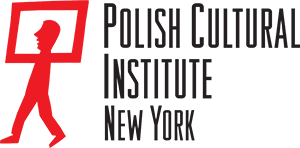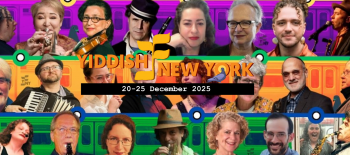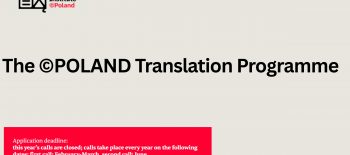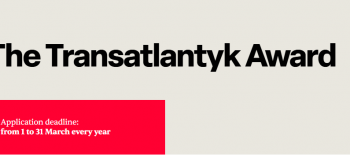Magdalena Dukiewicz: (a)biotic factors
curated by Dominika Tylcz
March 31 – April 29, 2023
At GHOSTMACHINE Gallery
373 Broadway #B19, New York, NY 10013
This event is recommended by the Polish Cultural Institute New York. We are also proud to support Magdalena Dukiewicz’s upcoming artist residency at Pioneer Works that will be held on August 1-December 21, 2023.

Biology – understood as a constitutive set of conditions and processes necessary for the flourishing and eventual wilting of life – defines the core concern of Magdalena’s Dukiewicz creative output. Throughout her artistic career, Dukiewicz has carefully attended to the affective powers of embodiment, oftentimes treating her own body as a material for her sculptural practice. In her new series of works called Objects (2022-ongoing), the artist turns her attention to multiple networks of inorganic matter that uphold and bolster human modes of living in late capitalist societies. “Living” here is conceived in a twofold manner: as the continued activity of sustaining life, and as dwelling or nesting in the world. The sculptures in the series result from intimate encounters of scrap metal and other debris with carefully prepared, transmuted fragments of the artist’s own body, a thread consistently weaving through Dukiewicz’s work. In combining castoff fragments of urban landscape with specimens of hair and blood, she probes how the body extends out into its surroundings and in turn is shaped by its habitat, itself an outcome of human design. The mercurial metaphor of the body operates here in the amplest sense, arching from the molecular level of a single blood cell to the figure of body politic, a biological lens applied to whole populations.
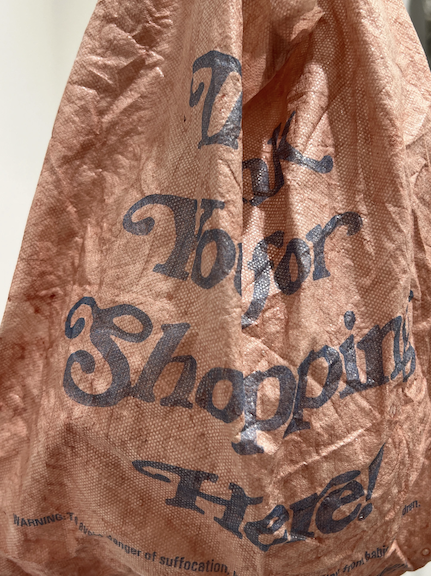
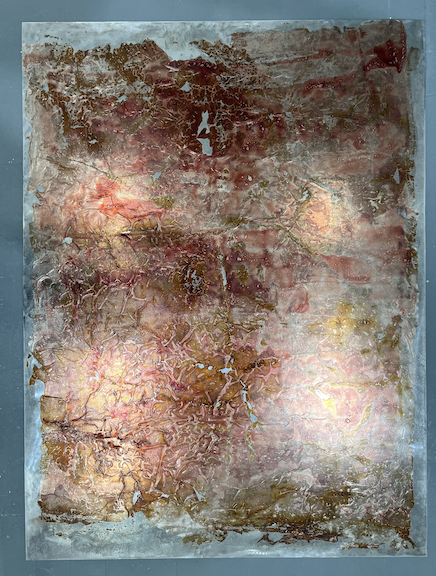

Works in (a)biotic factors appear as hybrid species defying binary understandings of the animacy of matter. Tufts of hair, now severed from the organism that nurtured them, sink into crumpled and eroded metal parts, also orphaned from their functional environment. Discarded bedsheets swell, nested in between the knots of a tangled net of building cables. A discontinuous web of these cables is strewn around the gallery space, evocative of cardiovascular or nervous systems, externalizing the hidden infrastructure of the building. These jarring amalgams indicate a point where organic and inorganic ways of being converge into a site of shared affects, behaviors, and functions. Dukiewicz contemplates and enhances these overlaps across living and inanimate matter without erasing the difference between her materials. The centrality of hair in the Objects series attests to how these seemingly disparate aspects fold into one another. Being both a part of the body and often considered its product, hair straddles the economic, cultural, and biological logics underwriting human subjects. In the same way, the found objects afford double understanding, which the artist ingeniously harnesses in her hybrid compositions – fragments of built structures appear as a formal repetition as well as a functional imitation of an organic system, while maintaining their ability to reintegrate into the urban landscape. All materials bear marks of decay and change, evincing rhythms of becoming outside of the human purview. As all biotic and non-biotic factors are subject to the same pressures, forces, and subsequent mutations, the sculptures reveal unsettling similarities between thing-ness and flesh, resource and body.
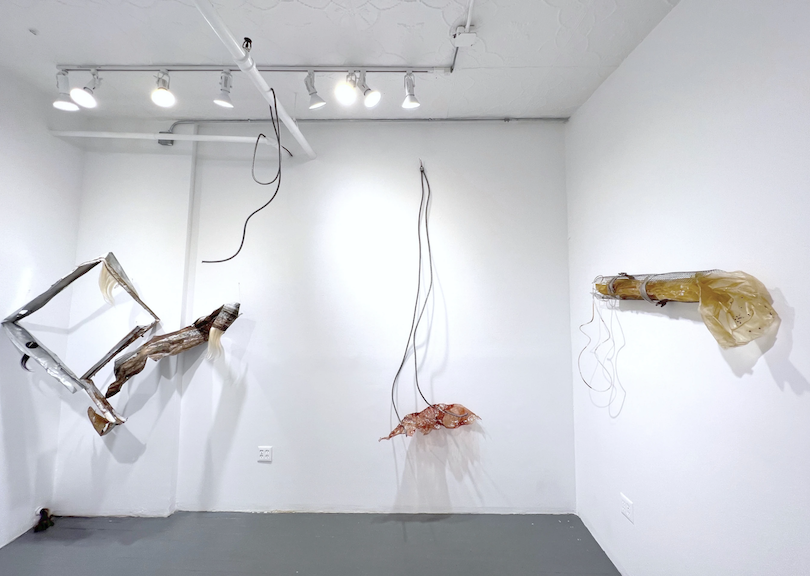
Dukiewicz stages her works in an open-ended installation that indexes the gallery space and attunes it to the possibility of existing as a tissue of a hybrid organism, in which it echoes the systemic logic of organization that arranges both biological and inorganic matter. Yet, the objects in the exhibition have porous boundaries: they leak out into their surroundings, exercising a sort of architectural mimicry. This seepage mirrors the blurring of conceptual boundaries between binary pairs of life and its purported absence that is central to Dukiewicz’s practice. In all her artistic decisions, Dukiewicz challenges the preconceived notions of autonomy, pointing towards the interconnected ways in which life establishes itself. Far from a gleeful statement, (a)biotic factors is a meditation on the stifling architectures of the human world whose burdening weight is felt by individuals and their habitats alike.

